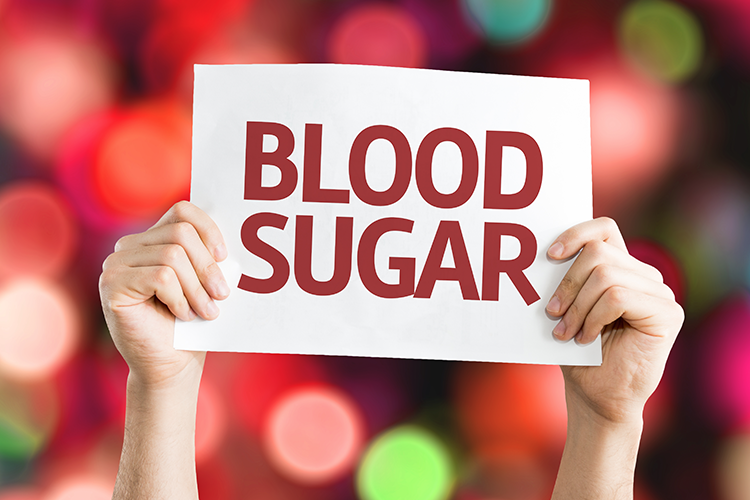Blog
Managing the blood sugar swing
When you read or hear about eating sugar, you may also read or hear about blood glucose (also referred to as blood sugar).
Glucose is one type of simple sugar. Blood glucose is the amount of glucose floating around in the blood.
Other simple sugars (also known as monosaccharides) include fructose and galactose, and good ol’ table sugar comprises a combination of glucose and fructose.
We tend to get our glucose supply from food, which then offers all body cells glucose-fuelled energy to do the things they do. As a result, if we lack external glucose sources, the body is very good at maintaining a supply of glucose in the blood through a series of biochemical processes.
In order for the glucose to be taken into cells, they must be receptive to insulin, the hormone that aids in this process. When too much glucose is thrown at cells, the cells can become resistant to insulin and blood glucose levels remain high. Risk then increases for pre-diabetes and type 2 diabetes.1
While some people are more predisposed to insulin resistance and type 2 diabetes than others, various aspects of diet and lifestyle can influence blood sugar levels and hence the risk for disease development. So, here are some things to consider when working to stabilise levels to keep you powering on each and every day.
The highs and lows of blood sugar: what and when you eat
Foods high in added sugars, refined flours and grains: Added sugars and all those foods made from heavily refined such as pastries, white bread and pasta impact blood glucose similarly, encouraging rapid spikes followed by almighty crashes.
Try: To offer the body and brain a sustained yet slow-release source of energy, eat mostly real whole foods with low glycaemic load, particularly at breakfast, to start the day on the right foot. These should contain fibre, healthy fats and protein.
Pre-made ‘sugar-free’ foods: The sweetness from artificial non-caloric sweeteners may be interpreted by the body in a way that can still cause insulin release (and insulin will store glucose as fat when the cells are, at that moment, no longer in need for glucose) and drive you to eat more.
Try: If in need of something sweet, reach for a piece of fresh fruit or have on hand a delicious snack (try our Low Sugar Snacks e-book or recipes on our website for ideas!).
Soft, energy and sports drinks: None of these beverages is required in the human diet. And regular overconsumption of added sugars can increase the risk for weight gain and chronic diseases such as type 2 diabetes and liver and heart disease.
Try: Sub out sugary drinks for water (sparkling or plain) infused with fresh slices of fruit. Following exercise, consider whether you actually need to replenish energy with sugars, or simply rehydrate. And if you’re running a marathon and need a quick energy hit, consider leaving the Gatorades and Powerades behind and making your own.
Infrequent eating: Skipping meals forces the body to produce stress hormones. This triggers the release of stored glucose to help keep the body and brain going. It can also lead to mood swings, fatigue and difficulty focusing, leaving you reaching for a sugary hit.
Try: Stick to a regular meal routine. Work out what frequency of meals is optimal for you, whether 3 main meals or 6 smaller meals across a day, ensuring they contain sources of fibre, protein and healthy fats. In particular, 6 small meals throughout a day can benefit folks who suffer from feeling hangry.
The highs and lows of blood sugar: lifestyle stuff to consider
Sleep and stress
Essentially, if you get a decent amount of good quality sleep, your food and drink choices are better the following day. Think about it – if you are tired, you’ll likely reach for stimulants and quick-energy-hit snacks and drinks. But this will lead you down the road of blood sugar highs and lows, a rollercoaster that makes life hard for the brain and body to operate optimally.
Additionally, one needs to get wired to get through the day when tired. The body will produce stress hormones to keep you going (and bring you back from those blood sugar lows), resulting in poorer cognition and impairing chances for good quality sleep the following evening. Therein begins a vicious cycle.
Try: Getting to bed at a reasonable time on a regular basis, avoiding stimulants like sugar and caffeine from earlier in the day, and limiting exposure to stress and bright lights early in the evening, can all help improve sleep quality. To help manage stress, simple meditation or deep breathing exercises are really beneficial throughout the day or before bed, and exercise can help to blow off some steam.
Exercise
Exercise can help increase insulin sensitivity. But exercising hard can put a lot of demand on the body, so fuel up and refuel wisely. If you’re concerned about managing your blood glucose levels when exercising, chat with your healthcare practitioner to determine what exercise suits you.
Try: Enjoy some physical activity every day, such as walking, swimming, bike riding, resistance training or yoga.
Finally, the above is aimed at the general population, not those with specific health conditions. If you’ve concerns about how your body handles glucose, chat with your healthcare practitioner.
By Angela Johnson (BHSc Nut. Med)
References:
- NIDDK 2009, Prediabetes & Insulin Resistance, viewed 26 September 2017, <https://www.niddk.nih.gov/health-information/diabetes/overview/what-is-diabetes/prediabetes-insulin-resistance>












